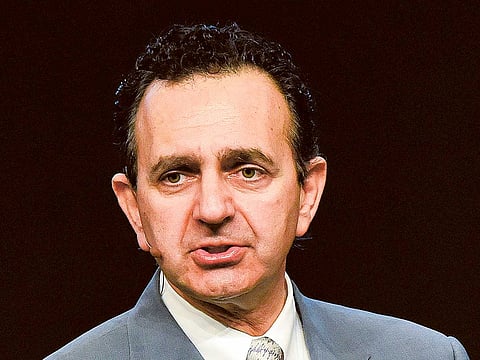3D printing of human organs is the next big thing
New printers can print the size of 1/80th diameter of a human hair

Dubai: 3D printing for medical use was the highlight of two sessions on the last day of the Government summit.
Dr Anthony Atala, Director of the Wake Forest Institute for Regenerative Medicine, in his session ‘What Comes After 3D Printing Body Parts’, spoke about their progress in using 3D printing to create human organs.
He said that they have been creating human organs for years, mostly by hand and using 3D printing, but the challenge is to find a way to scale up the production for the 100,000 patients that need them.
“Every 30 seconds a patient dies from a disease that organ transplants could save,” Atala said.
He said that the organs they make have four levels of complexity: flat, like skin; tubular, like blood vessels; hollow non-tubular, like the bladder; and solid organs such as the heart and kidneys.
“We have managed to successfully implant the first three types successfully,” he said, adding that they have monitored patients with implanted organs for 10 years and they are all doing well.
He said that they started 3D printing organs using regular inkjet printers with some adjustments, including using cartridges filed with cells instead of ink.
“We have developed more sophisticated printers since then, that are more precise. The printers are high-resolution that it can print the size of 1/80th diameter of a human hair.”
He added their most recent printing system allows them to bring a printer to the patient’s bedside to scan a wound and print over it.
However, he said, getting through the regulatory authorities takes time, “The regulatory channels are hard, for a pill to go from testing to the market it takes around 15 years.” Dr Atala said.
He explained that they have been working on this for almost 13 years now, and he expects these organs to be seen in hospitals soon. “It is already happening for the skin, we will probably see other flat structures being used and other simple structures soon too,” Dr Atala explained.
One of the other key challenges is the cost of these 3D printed organs, but he said that could be overcome if they are produced on a large-scale.
Albert Manero, Executive Director at Limbitless Solutions, in his session ‘Bionics for Humanity: Disability is Not An Option’, spoke about how his organisation helped and still help children who need bionic limbs, without burdening their families with the costs, using 3D printing.
He said it is difficult for children to get prosthetics because they outgrow them quickly, and they are also expensive.
“When you mix compassion and technology, you form new solutions to help people,” he said.
He said that studies showed that more than a billion people will deal with disability in their lives, “it is a big problem and it needs a big solution,” he said.
Bionics technology is not just for people with limb issues but also for people with neuromuscular diseases.
He said that governments are in a unique position to make 3D bionic limbs accessible to people.
“We need international partners to work with the children on the ground in their countries and send us data we can use,” Manero said, adding he had received e-mails from parents from across the world — more than 60 countries- asking for bionic parts for their children.
“We are at the cusp of an era of disability and technology, will we enter an era where disability does not define a person?” Manero asked.
Sign up for the Daily Briefing
Get the latest news and updates straight to your inbox



